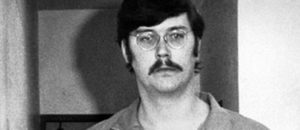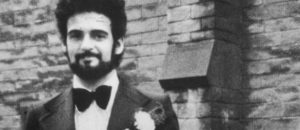Christopher Robin Worrell – Truro, South Australia, Australia
Christopher Robin Worrell was an Australian suspect linked to a series of killings of young women in South Australia during the 1970s. He is most commonly associated in press accounts with a string of seven deaths around the Truro and Adelaide areas.
Key Facts
- Seven young women have been linked to the killings associated with Worrell and an alleged associate.
- The case has been referred to in media reports under the nickname “Truro murderer.”
- Worrell’s alleged companion, James Miller, was convicted in connection with six of the seven deaths.
- Worrell was reported to have died in a car crash in 1977, though accounts about his fate have been contested.
- Most victims were teenagers or in their early twenties, generally described as aged 15–20.
- A number of the victims were reportedly hitchhiking when they disappeared.
- Strangulation, frequently using a nylon rope, is described as the principal method of killing.
- Investigators at the time suggested at least one victim may have been buried alive.
- The incidents occurred in the Adelaide and Truro regions of South Australia during the 1970s.
Crimes and Victims
Police linked a cluster of deaths of young women to a small number of suspects in the mid-1970s, with seven fatalities commonly associated with the series. Many victims were described in reports as hitchhikers who disappeared and were later found dead near rural roads outside Adelaide.
Accounts from investigators emphasized a recurring pattern: sexual assault followed by strangulation, often with a nylon cord. Some contemporary reports raised additional concerns, including the suggestion that at least one victim may have been buried while still alive, though details remain contested in public records.
Capture and Trial
Investigations eventually led to charges against more than one individual, and James Miller was tried and convicted for six of the seven killings in media summaries of the case. Court records and press coverage from the period describe Miller’s conviction, but public details about sentencing and appeals are limited in secondary sources.
Worrell’s own legal status was complicated by reports that he died in a 1977 automobile accident, which introduced uncertainty into prosecutions connecting him to later allegations. That reported death and subsequent disputed accounts affected how authorities and the public discussed responsibility for the full series of crimes.
Psychology and Motives
Contemporary investigators and commentators noted a pattern of sexual violence in the incidents, suggesting that sexual assault was a central element of the offenders’ behavior. Beyond those observations, definitive explanations for motive were not publicly established, and no comprehensive psychological profile of the perpetrators has been widely circulated in primary sources.
Analysts who have written about similar cases often point to a mix of opportunism and control-driven violence in attacks on vulnerable hitchhikers, but applied conclusions vary by case. In this matter, gaps in the public record and disputed circumstances around Worrell’s status have limited firm conclusions about psychological drivers.
Background / Early Life
Biographical information about Christopher Robin Worrell available in public summaries is sparse and often tied directly to the criminal allegations. Basic references identify him by name and link him to the Truro–Adelaide area in the 1970s, but reliable details about upbringing, employment, or prior offenses are not extensively documented in widely available sources.
Similarly, background material about James Miller beyond his role in the prosecutions tends to be limited in news accounts from the era. The lack of comprehensive personal records in public reporting has left broader life-history context thin in historical retellings of the case.
Legacy and Media Coverage
The case attracted significant local media attention during and after the investigations, with the “Truro” label appearing repeatedly in press accounts and later true‑crime discussions. That coverage contributed to ongoing public interest, periodic revisits in retrospective reporting, and inclusion in compilations of notable Australian criminal cases.
Public discourse about the murders also influenced awareness campaigns and safety advice directed at hitchhikers and young people traveling alone. Debates over unresolved questions—particularly surrounding Worrell’s reported death and the full attribution of responsibility—have kept the case in discussions of investigative challenges from the period.
Trending on Killerpedia

Fred & Rose West – Gloucester, England

Jeffrey Dahmer – Milwaukee, Wisconsin

Dennis Nilsen – Full Sutton, Yorkshire, England

Ted Bundy – Florida

Gary Ridgway – Washington State

Pedro Lopez

Edmund Kemper – California

Edward Theodore Gein

Fritz Honka – Hamburg, Germany

Peter Sutcliffe – Broadmoor

Christopher Robin Worrell – Truro, South Australia, Australia

